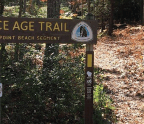Preserving the Old Ways

During the summer of 1903, President Theodore Roosevelt had fled Washington, DC’s swelter. He was vacationing at Sagamore Hill, his family home at Oyster Bay, New York, 25 miles east of New York City, when in burst Natalie Curtis. In the Manhattan socialite’s wake stepped a Yavapai Indian chief. The chief, whose name was Pelia, was carrying an enormous handwoven basket, a gift for the president. Curtis had brought Pelia to plead his tribe’s case.
The Yavapai, an Arizona tribe, had a longstanding grievance. In the 1870s, Pelia told Roosevelt, federal authorities had uprooted the Yavapai from a reservation in the Verde River Valley to another far southeast. On their harsh 180-mile winter trek, some 100 Yavapai had died. Federal officials promised that maintaining good behavior would get them back to Verde River. Instead, the Yavapai had spent 25 years docilely living alongside other Apaches distinctly different in culture and temperament. The Yavapai felt that they could never truly be themselves until they were in a separate community and back on the land that traditionally had been their home. Now their former reservation was full of squatters, the Indian leader told the president.
“Chief, tell your people that the White Chief will see that they have justice,” Roosevelt replied. He had the band’s former reservation cleared of squatters, and by 1905 the Yavapai had returned to the Verde River Valley.
To gain the intimate access that made this correction possible, Curtis, 28, had used her family connections. The Curtises and Roosevelts were of an ilk; Natalie’s family summered next door to J. West Roosevelt, a cousin of the President’s. An uncle of hers was an ally of Roosevelt’s in the campaign to reform the civil service.
That bold intrusion on a vacationing president was typical of Curtis, who refused to live
You’re reading a preview, subscribe to read more.
Start your free 30 days





